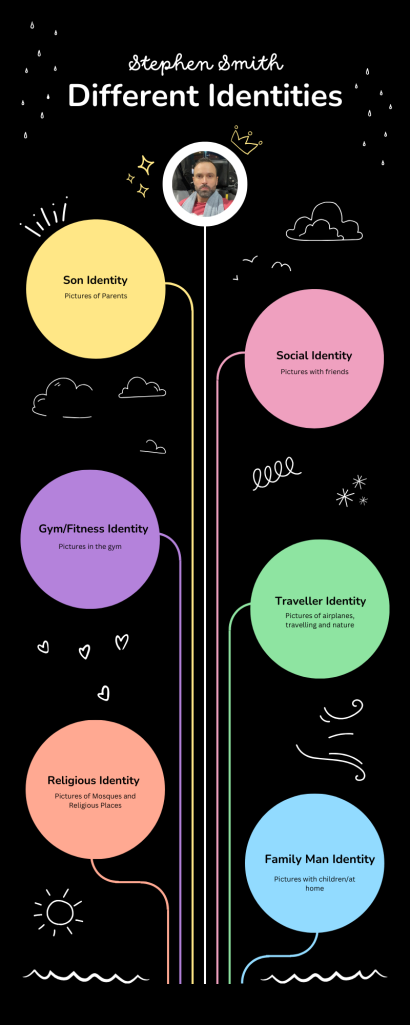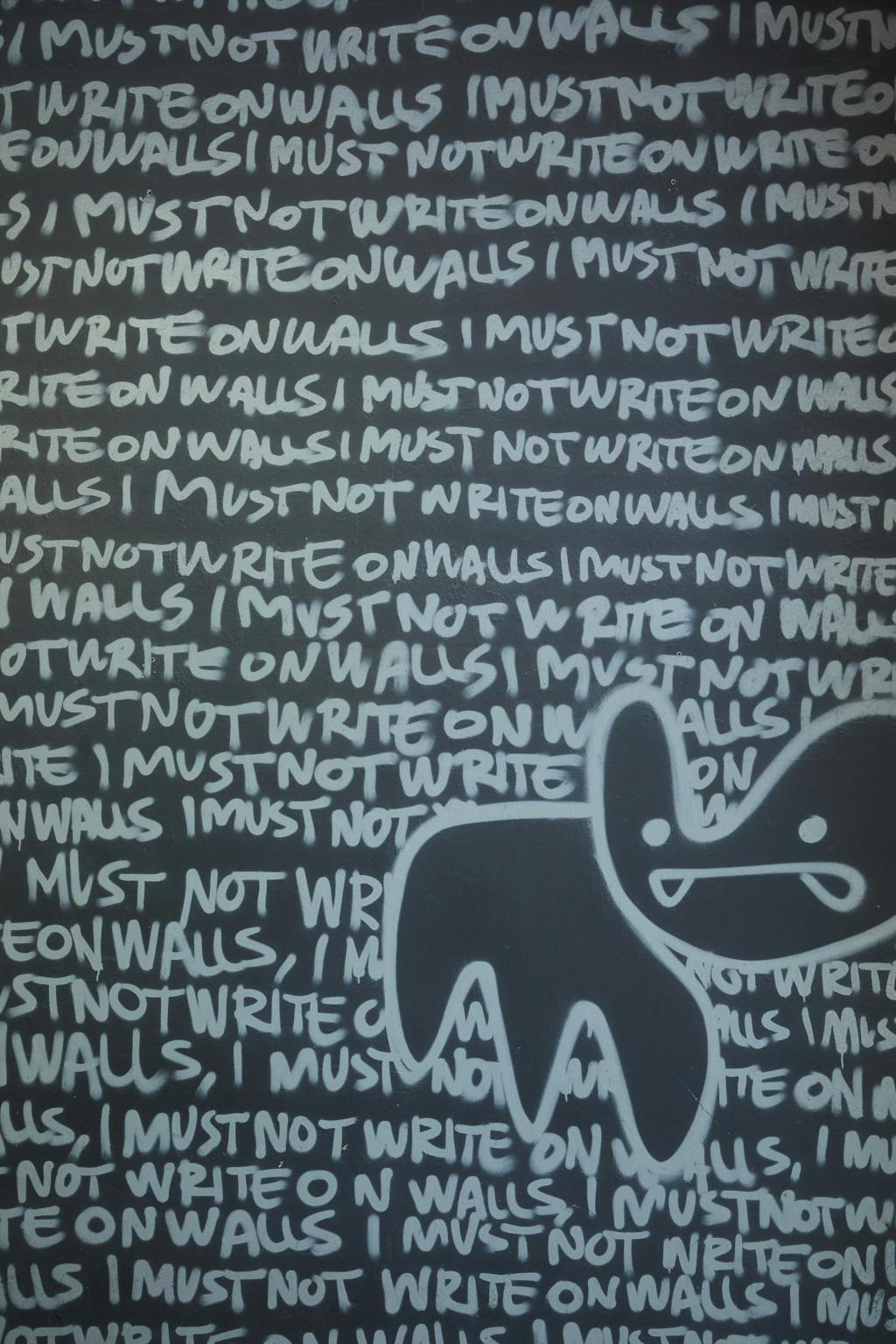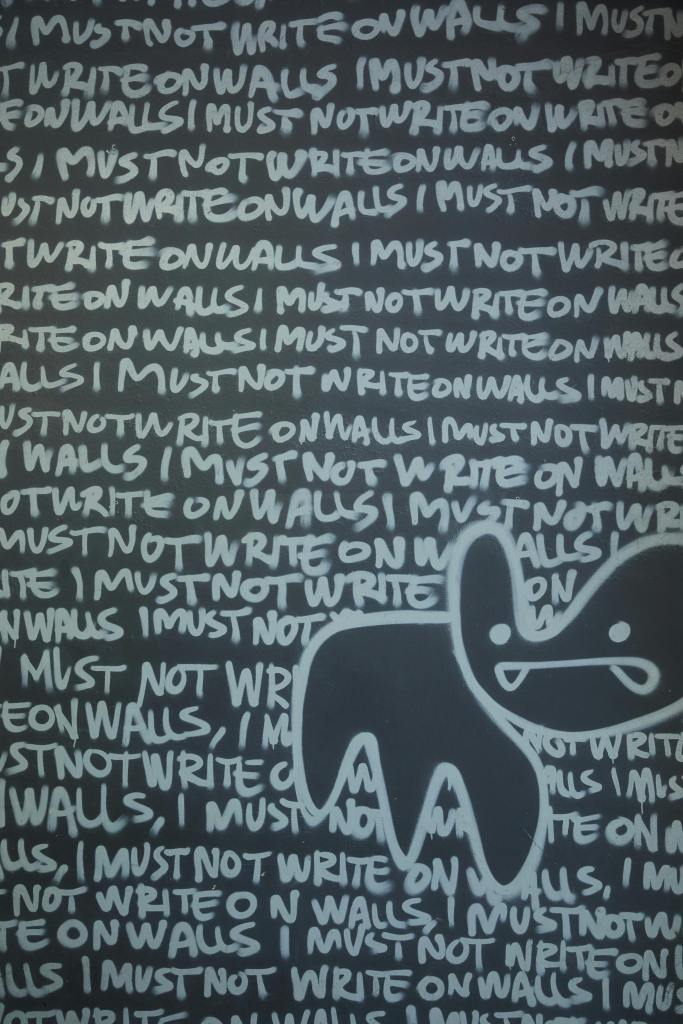Introduction
This paper examines how social media platforms shape and influence personal identity construction. Using my own experiences with Facebook and Instagram as a case study, I will analyze how I’ve curated different social media identities across platforms in response to changing social circles and personal relationships. Drawing upon the work of Erving Goffman and other sociological theorists, I’ll explore the tensions between authenticity, idealization, and the strategic performance of self on social media.

Part 1: Identity Shifts and Social Media
I have been using Facebook for several years. About ten years ago, it was an authentic space for me to store family photos, Islamic quotes, and pictures that truly reflected my values. I didn’t concern myself much with appearances – or did I? While posting content on Facebook, I was married. My ‘real life’ was co-dependent, confined within a house adorned with roses and shades of pink. Back then, social media allowed me to express my genuine self. But after leaving my wife for a younger woman, my identity became fragmented. My sense of self had been eroded over time. Once, I had a community, a place of belonging, and an identity within my religion. This gave me comfort in knowing who I was. Yet, when my world was turned upside down and I fell into a passionate relationship with a woman embodying secular desires, my social media identity shifted as well.
Instead of continuing to publish photos on Facebook, I started using Instagram, drawn by its focus on aesthetics. My photos were simultaneously cross-posted to Facebook.
Part 2: Constructing an Instagram Persona
Pictures I posted on Instagram were an attempt to show a positive image of who I am. Sometimes, posting was a euphoric experience, as I felt pride in myself. I posted pictures of visiting the Prophet Muhammed’s Mosque in the City of Madina Al-Munawwarah, in Saudi Arabia, pictures with friends, or pictures of me driving a common 900-kilometer drive I would take from Jeddah to Riyadh. I’d share photos of the mountains, myself teaching English, sitting at cafés, in the gym, with work colleagues, or traveling by airplane. This curated image was meant to signal that I was unique, interesting, and lived a fulfilling life, seeking acceptance and validation (Zhao et al., 2008). I also posted pictures of my family when I was growing up, pictures of the Australian country, glimpses into my holidays to visit my parents and family, or even the roses or jewelry that I had bought for the woman I left my wife for.
Sociologist Erving Goffman’s concept of the dramaturgical model (1959) sheds light on this process. He argues that individuals perform different roles on a social ‘stage’, adjusting their presentation of self for varying ‘audiences’. My Instagram posts exemplify this; I consciously used Instagram as both a ‘front stage’ (public performance) while simultaneously knowing aspects of my private ‘back stage’ life would subtly bleed through.
Part 3: Conflicting Identities and Aspirations
The struggle I faced when posting pictures was a desire to remain authentic – like in the photo I posted of my step-dad hugging a rock – yet also wanting to embody a type of masculinity I believed my new lover desired. This tension highlights the interplay between social performance and a potential inner drive. While Goffman and Butler emphasize identity’s performative nature, evolutionary perspectives suggest certain masculine traits, like competitiveness, may have biological roots (Buss, 1995; Campbell, 2013).
Meeting my ‘new lover’ was a catalyst to express confidence and a traditional form of masculinity. Later, my focus shifted to professional appearances – nice cafes and gym photos. Yet, a part of me still yearns to be a devoted father and perhaps even return to the man I was before.
Judith Butler’s concept of gender performativity (1990) sheds light on this experience. She argues that identity is not innate but rather actively performed through repeated acts that align with social expectations. As she states, “Gender is the repeated stylization of the body, a set of repeated acts within a highly rigid regulatory frame that congeal over time to produce the appearance of substance” (Butler, 1990, p. 33). My efforts to embody a specific type of masculinity on Instagram align with her ideas – highlighting how identity becomes a series of actions and curated images rather than a fixed essence. The identity one portrays on social media is inherently dynamic, shaped by conscious choices and the desire to conform or rebel against societal norms.
References
- Buss, D. M. (1995). Evolutionary psychology: A new paradigm for psychological science. Psychological Inquiry, 6(1), 1-30.
- Butler, J. (1990). Gender trouble: Feminism and the subversion of identity. Routledge.
- Campbell, A. (2013). A mind of her own: The evolutionary psychology of women. Oxford University Press.
- Goffman, E. (1959). The presentation of self in everyday life. Doubleday.
- Zhao, S., Grasmuck, S., & Martin, J. (2008). Identity construction on Facebook: Digital empowerment in anchored relationships. Computers in Human Behavior, 24(5), 1816-1836. https://doi.org/10.1016/j.chb.2008.02.012
*Infographic made from free template on Canva.com



Leave a comment